
Plastic Surgery: Before and After Photos of Cosmetic Surgeries
Plastic Surgery: Before and After
Cosmetic surgery is not just for the rich and famous. It's available to almost all who need or want it in the U.S. and many other countries. Over 18 million cosmetic surgical procedures are done per year in the U.S.
Procedures that result in flatter stomachs, increased or decreased breast size, reshaping of the nose or chin, and many skin alteration techniques are some of the most popular procedures. This slideshow will show some untouched before and after pictures of cosmetic surgery. Examples include both surgical procedures and minimally-invasive procedures (for example, chemical skin peel or laser skin treatment).
Nose Job: Before and After
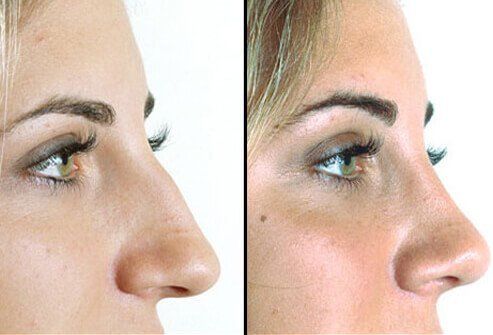
A rhinoplasty (commonly termed a nose job) is a procedure in which the nose is reshaped to correct crookedness, or remove a bump or lump, or simply reduced in size to better fit the facial structure. It is usually not done on patients younger than 15 years of age. Recovery takes about 1 to 3 weeks and complications are rare.
Eyelid Surgery: Before and After
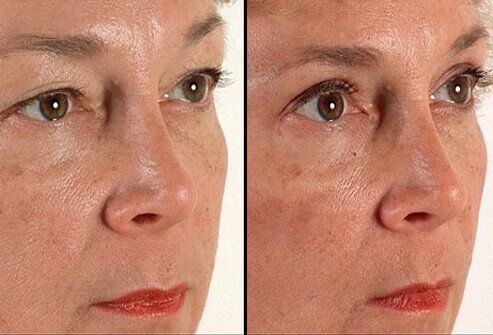
Blepharoplasty (eyelid surgery) can improve droopy upper eyelids and baggy skin under the eyes by removing excess skin and fat. Healing takes about 1 week, and scars are rarely visible.
Neck Lift: Before and After
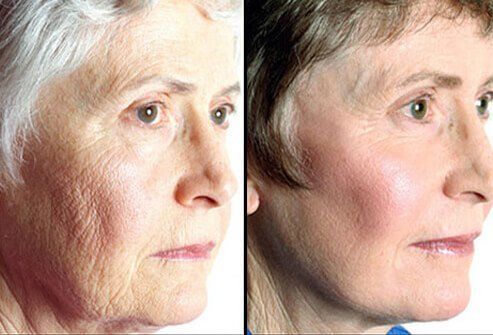
Loose tissue around the neck (sometimes referred to as turkey neck) can be surgically corrected by removing excess skin and tightening the muscles. A neck lift is usually done in conjunction with a facelift (see next slide). Recovery takes about 2 weeks. The procedure carries only a small risk of infection./p>
Facelift: Before and After
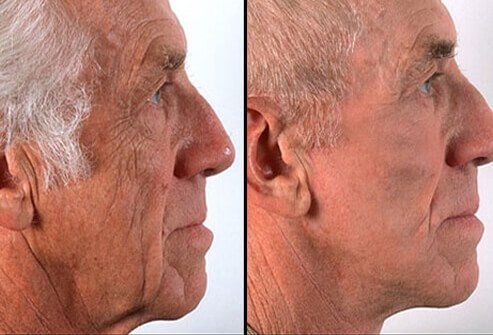
A facelift may reduce the effects of aging and gravity on the facial and neck skin by pulling it upward surgically and removing excess skin, fat, and wrinkles. Some patients may have filler or fat inserted to further restore a more youthful appearance. There is a small risk of infection. Some surgeons may use other less invasive techniques such as dermabrasion or laser surgery.
Laser Skin Resurfacing: Before and After
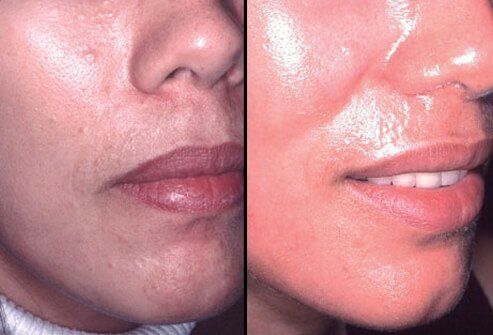
Laser skin resurfacing is a technique that uses amplified light waves generated by a carbon dioxide laser to vaporize the top layer of skin instantly to remove wrinkles, acne scars, "crow's feet" (wrinkles lateral to the eyes), and sun-damaged skin with no bleeding and minimal damage to adjacent skin. Healing takes about 1 to 2 weeks.
Hair Transplant: Before and After
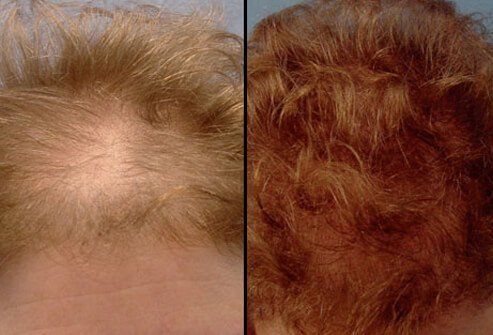
Hair loss is common in men and some women as they age. Hair transplants can reduce the effect of hair loss. The hair transplant technique has evolved over many years to current methods that transplant one to about three hairs (termed follicular units or FU) from a person's thicker area of hair growth (usually from the back or side of the head) into the areas of sparse or no hair growth. A single session may involve transplanting about 2,000 FUs into a natural hair pattern.
Arm Lift: Before and After
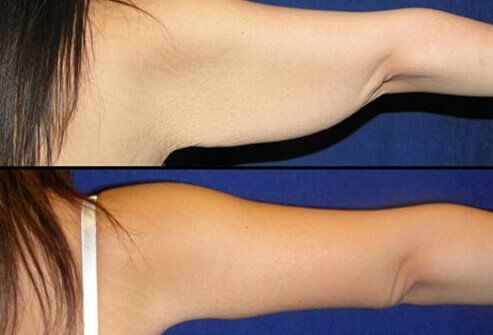
Brachioplasty or an arm lift can reduce the flappy or saggy skin and fat that women especially develop near the triceps and upper arm with age. Commonly termed "chicken wings," this extra skin and fat in the upper arms can be removed. But there will be a scar on the inside of your upper arm after the procedure.
Liposuction: Before and After
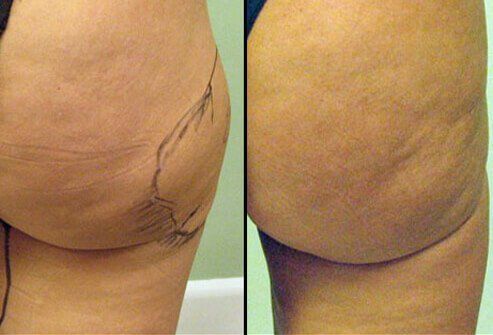
Bulges of fat in the areas of the tummy, thighs, hips, or behind can be reduced by the liposuction technique, now a commonly used cosmetic surgery procedure. Suctioning out the fatty bulges can result in smoother body contours. There are some infrequent risks to the procedure that include skin or nerve damage, scarring, infection, asymmetry (uneven removal of fat bulges), and other problems.
Tummy Tuck: Before and After
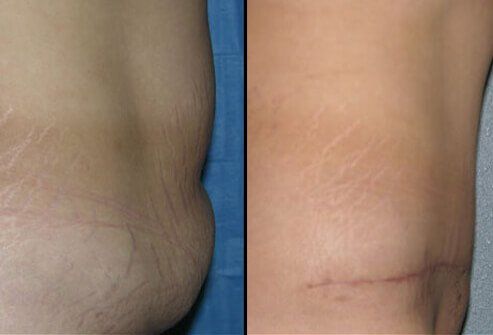
Belly fat and belly protrusion can be reduced by a tummy tuck. Although the common term for abdominoplasty -- tummy tuck -- sounds benign, it is major surgery that consists of fat removal and tightening of the abdominal muscles. An abdominal scar will be visible after the surgery. Surgeons suggest postponing a tummy tuck if a person is still planning to lose weight or is planning to become pregnant.
Breast Implants: Before and After
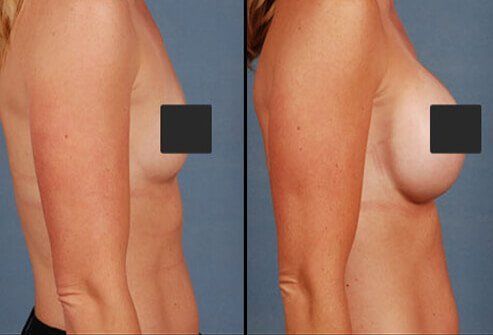
Breast implant surgery (termed augmentation mammoplasty) is a common cosmetic surgical procedure for women. The surgery involves making a cut in the armpit, areola, or at the breast fold. The doctor then places a saline or silicone gel implant of a specific size (chosen by the patient but in consultation with their doctor to best fit the person's breast anatomy, skin elasticity, and body type). The risks are low but include scarring, infection, implant leakage or rupture, and other problems.
Breast Reduction: Before and After
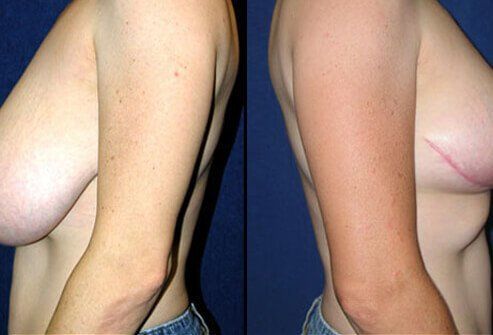
Some women develop large heavy breasts that can cause neck and back pains. Breast reduction surgery can reduce breast size by removing fat tissue and skin from the breasts. Again, the risks are low, but include scarring, infection, loss of feeling in the nipples, and other problems.
Choosing a Surgeon
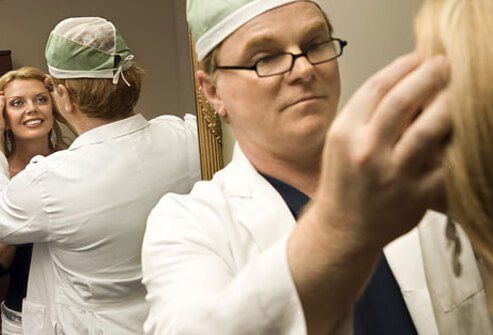
Choosing a cosmetic or plastic surgeon is very important. You will need a competent, experienced, and caring doctor that you can trust and communicate with candidly. Here are some tips: Ask your friends for a referral if they liked their cosmetic surgeon. Ask if the doctor is "board certified" in cosmetic surgery because this certification indicates the doctor has had special training and testing in plastic surgery techniques.










